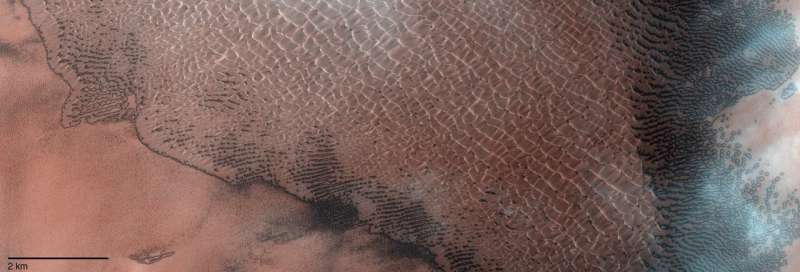The image was released on the occasion of the five year launch anniversary of the mission.
The first five years
TGO launched from the Baikonur Cosmodrome in Kazakhstan on 14 March 2016, arriving at Mars seven months later. It spent several months aerobraking—using the top of the planet's atmosphere to create drag and slow down—to became the first ESA spacecraft used to enter its science orbit in this way.
The mission began full science operations in April 2018 with its suite of four instruments. TGO's NOMAD and ACS spectrometers are designed to provide the best ever inventory of the planet's atmospheric gases yet, and have already detected a new gas—hydrogen chloride—for the first time, as well as studying processes linked to atmospheric water escape in greater detail than ever. TGO is also adding to the lively debate surrounding the presence of methane on the planet by revealing a surprising lack of the mysterious gas. The FREND instrument is mapping the distribution of hydrogen in the uppermost meter of the planet's surface, creating a detailed map of possible water-rich oases, relevant for future exploration of Mars. The CaSSIS camera has captured more than 20 000 images documenting the surface and complementing the data returned by the other instruments to help characterize features that may be related to trace gas sources.
TGO also provides routine data relay for NASA's landers and rovers: Opportunity (until its end of operations in 2018), Curiosity, Insight and Perseverance. It will also be the communication link for the second ESA-Roscosmos ExoMars mission, comprising the Rosalind Franklin rover and Kazachok platform, when it arrives on Mars in 2023.
Explore further



